AWS Lightsail Deep Dive: What is it and when to use
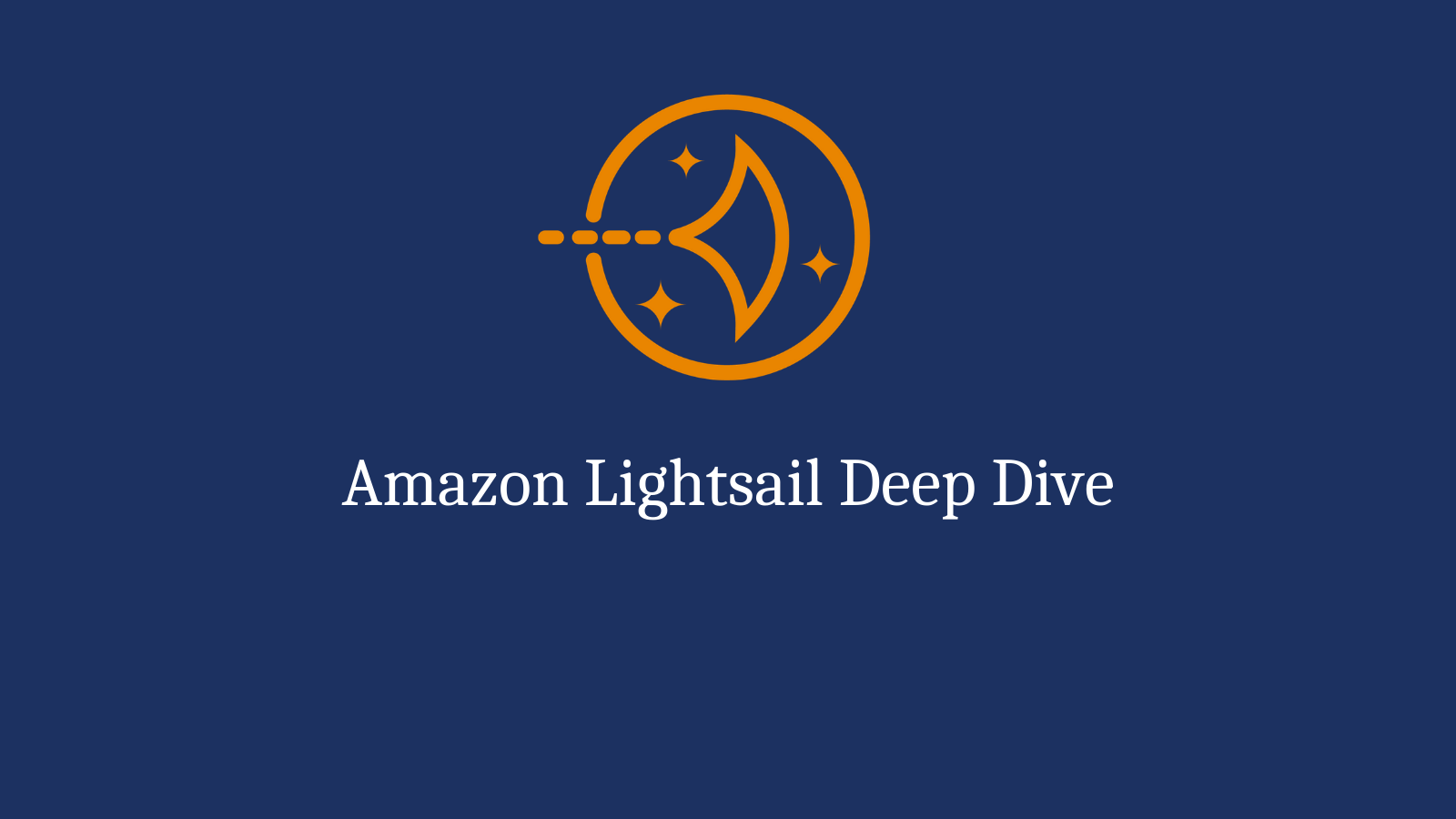
AWS Lightsail doesn’t usually show up in a list of AWS’ most popular services. However, Lightsail can be a great service to use especially if you are looking for a service that is easy to set up and has low maintenance. In this article, we will take a deeper look into Lightsail, when to use it and compare it to some of its competitors.
AWS Lightsail is a collection of building blocks that make it easy to get a web application up and running pretty quickly. These building blocks are:
Lightsail Instances
These instances are analogous to Virtual Private Servers (VPS) which are backed by EC2 instances (most likely the t2/t3 family) under the hood. AWS provides a lot of flexibility when it comes to choosing what kind of instance you want to run.
AWS Lightsail can be created in the following AWS Regions (as of September, 2020):
- US East (Ohio) (us-east-2)
- US East (N. Virginia) (us-east-1)
- US West (Oregon) (us-west-2)
- Asia Pacific (Mumbai) (ap-south-1)
- Asia Pacific (Seoul) (ap-northeast-2)
- Asia Pacific (Singapore) (ap-southeast-1)
- Asia Pacific (Sydney) (ap-southeast-2)
- Asia Pacific (Tokyo) (ap-northeast-1)
- Canada (Central) (ca-central-1)
- EU (Frankfurt) (eu-central-1)
- EU (Ireland) (eu-west-1)
- EU (London) (eu-west-2)
- EU (Paris) (eu-west-3)
Lightsail also provides several options for the base image that you use for instance. You can choose from:
- OS Only: You can choose from various Linux/Unix-based or a Windows-based OS
- Apps + OS: If you are planning to run a CMS like Wordpress or application on top of Django or Node, you can choose an image that installs these applications by default.
More details about Lightsail instance images can be found here.
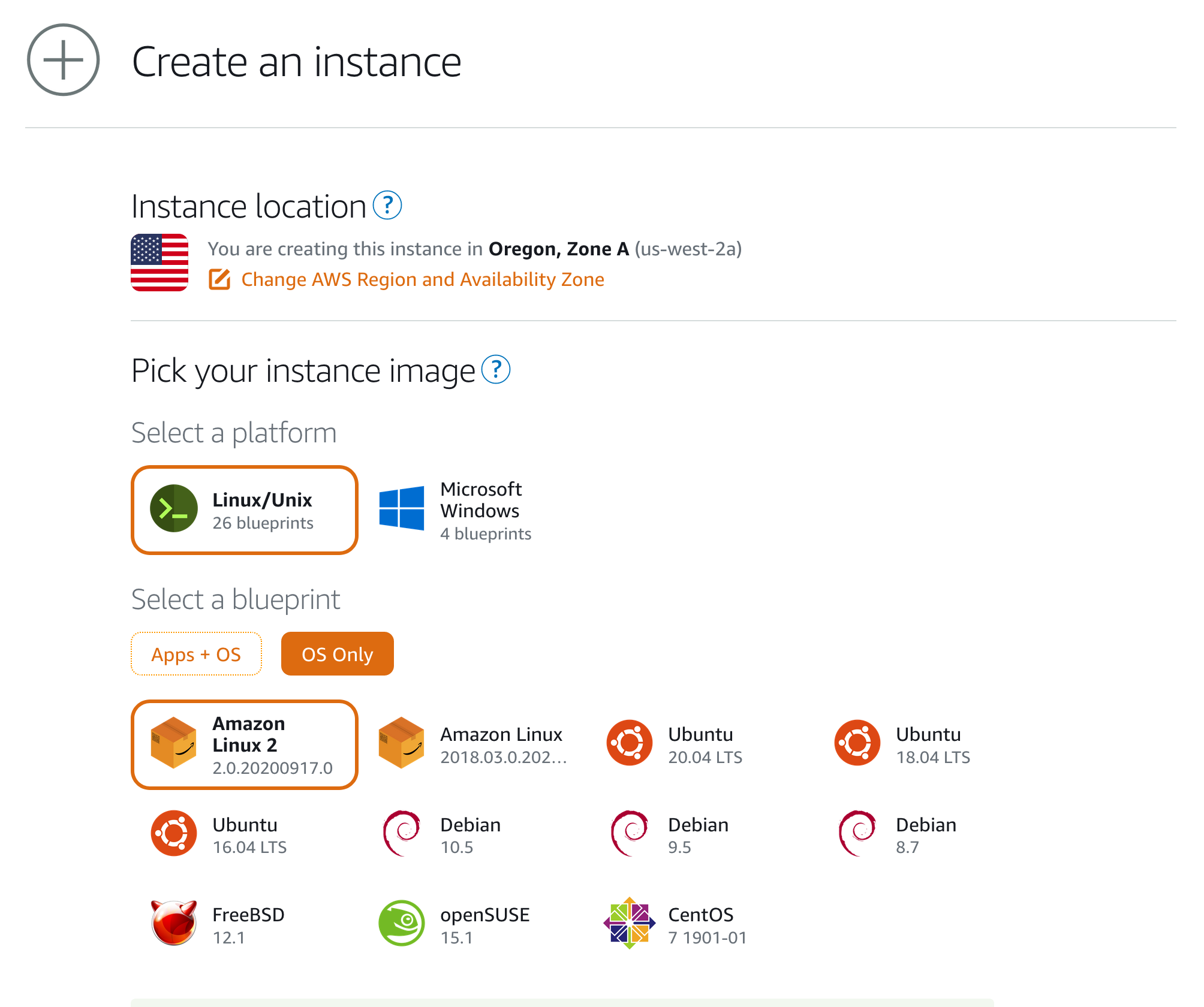
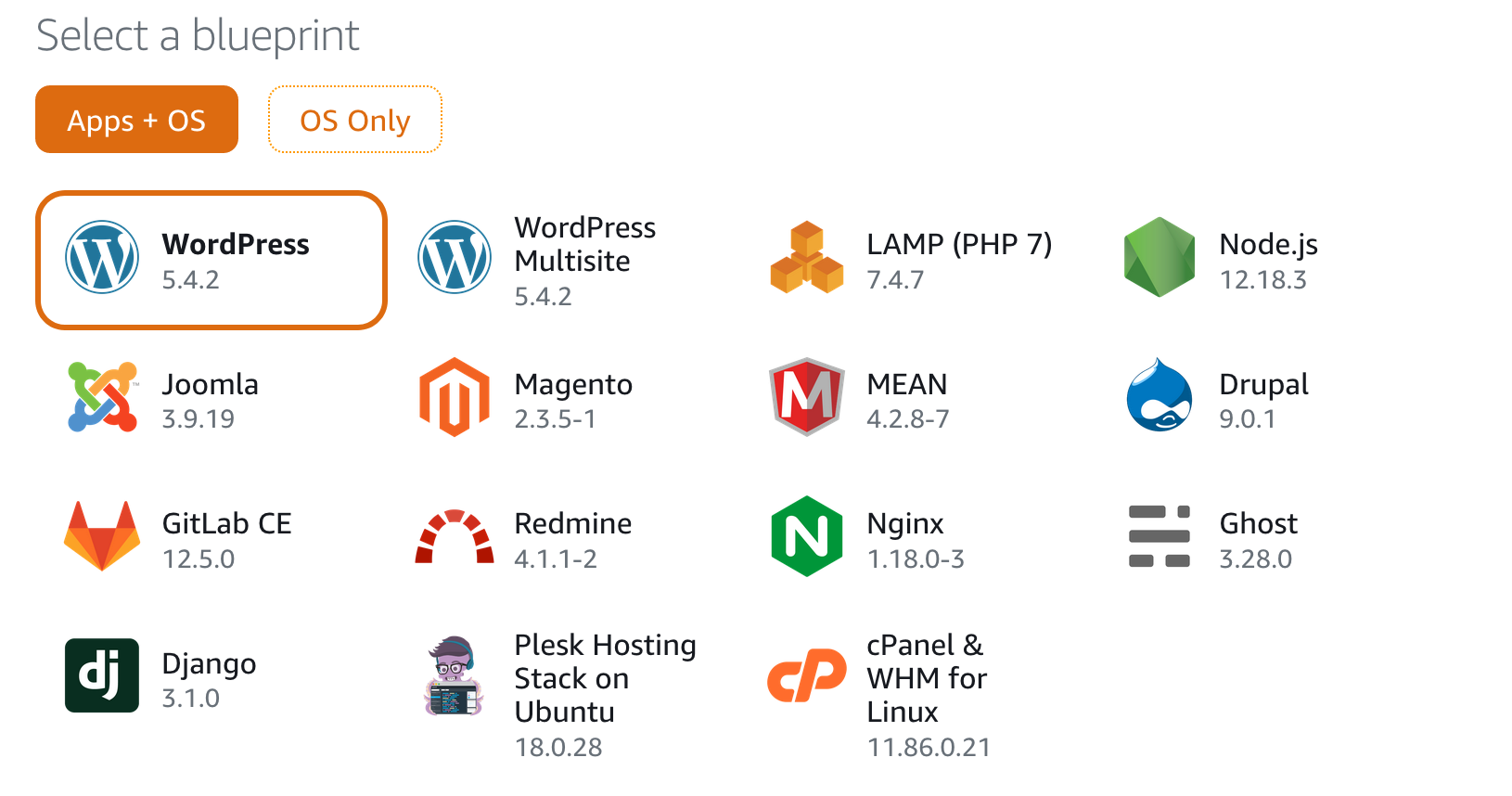
One of the best features of Lightsail is its clear and transparent pricing. You can create an instance that best fits your needs and you can be confident of how much it will cost you at the end of the month. AWS is notorious for complex billing and this can put off a lot of new customers.
Lightsail instances come with generous data transfer limits which is definitely a big improvement.
AWS recently added support for alarms in Lightsail. This is a big improvement since previously there was no way to set up an alert for Lightsail system metrics such as CPU utilization.
You also have the flexibility of upgrading your instance to EC2 in the future.
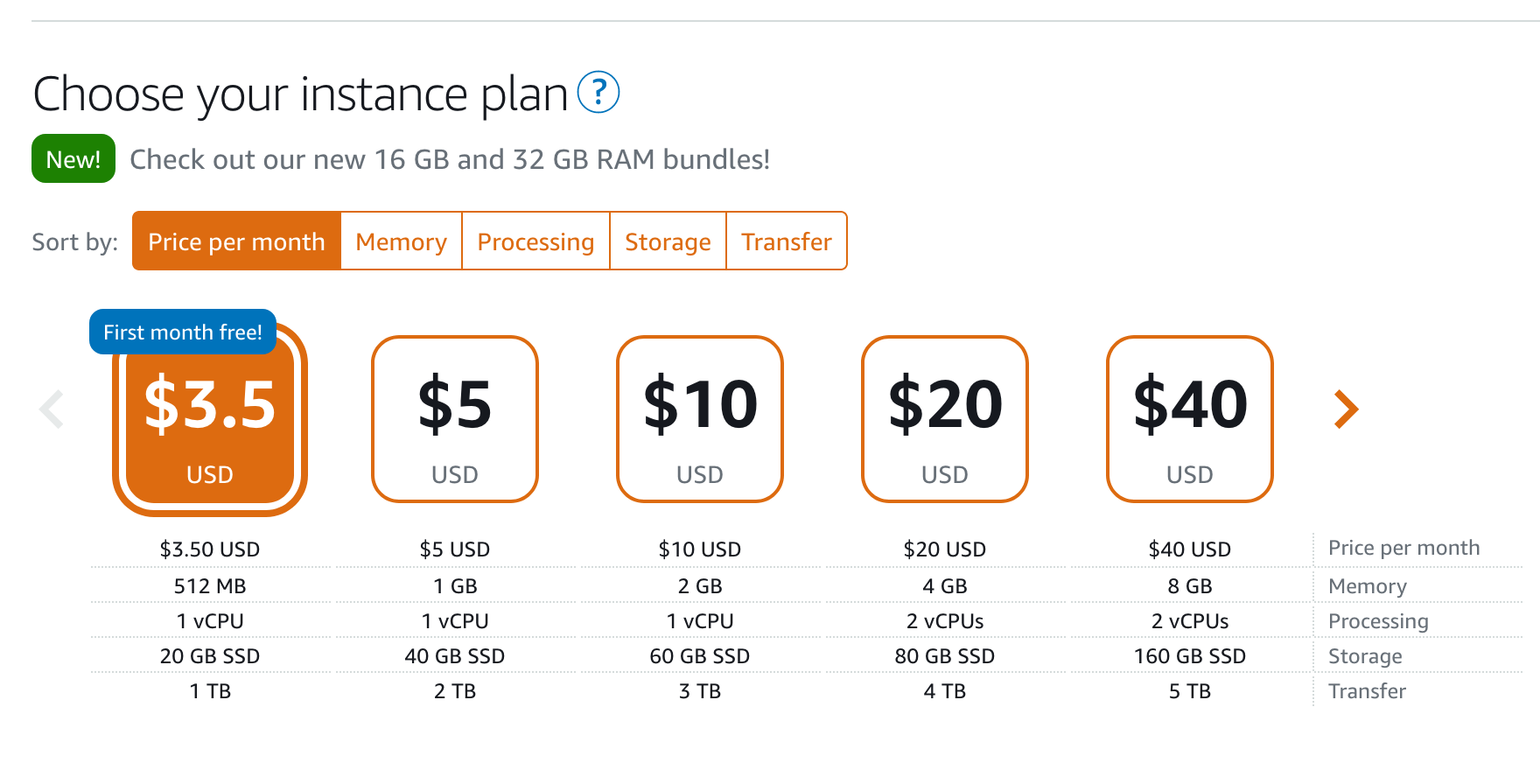
Loadbalancers
Lightsail provides the option of adding a loadbalancer to your stack if you need to distribute traffic across your instances. Lightsail also lets you generate free SSL certificates from the UI itself and they work seamlessly with the loadbalancers.
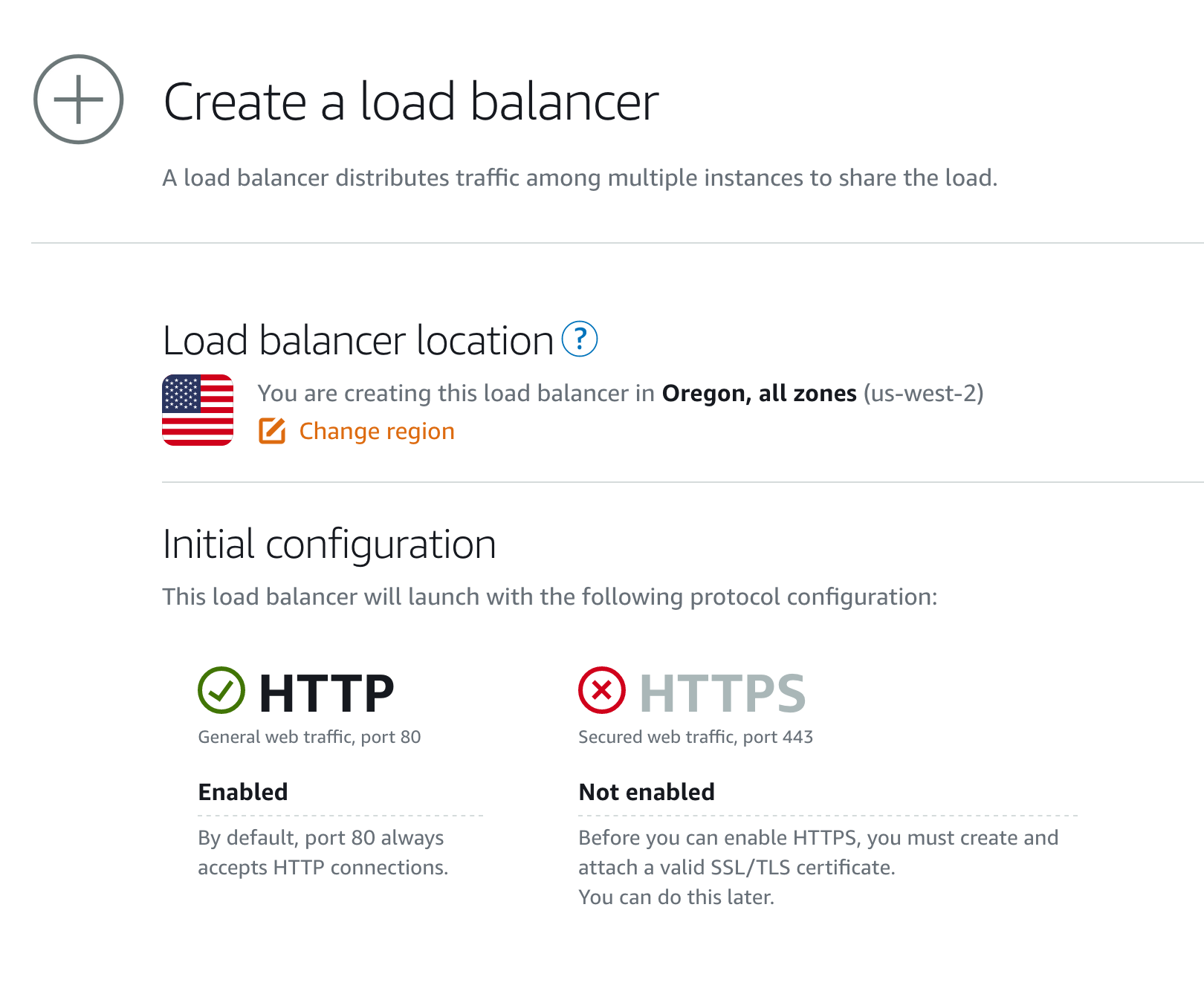
Managed Database
Lightsail lets you create a managed MySQL or PostgreSQL database easily. Lightsail makes certain database administration tasks much simpler:
- Automated database snapshots
- Resize your database from a snapshot
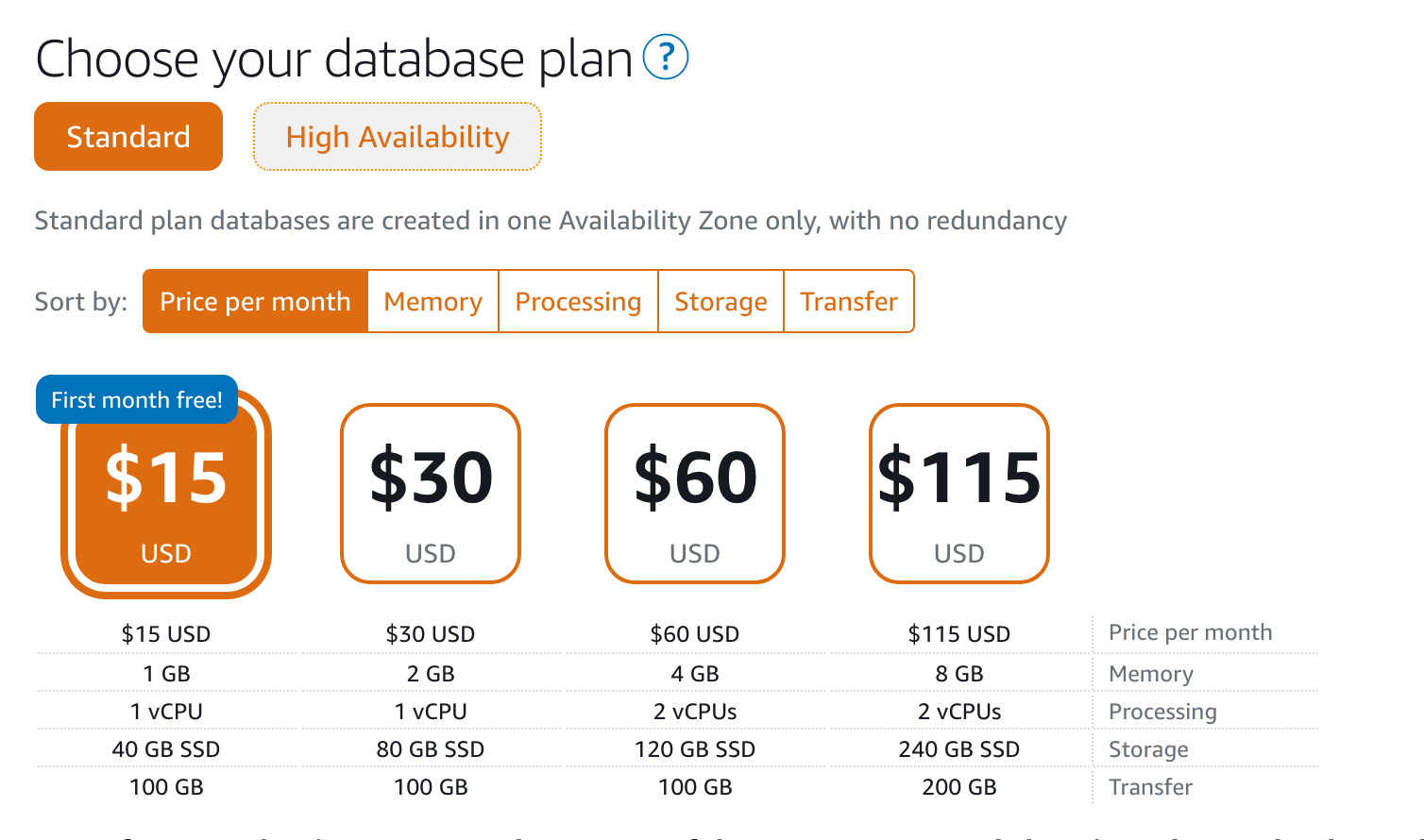
DNS Management
Lightsail makes it easy to direct traffic from your custom domain to your instances. This can be done by either creating a static IP or a DNS zone for your domain.
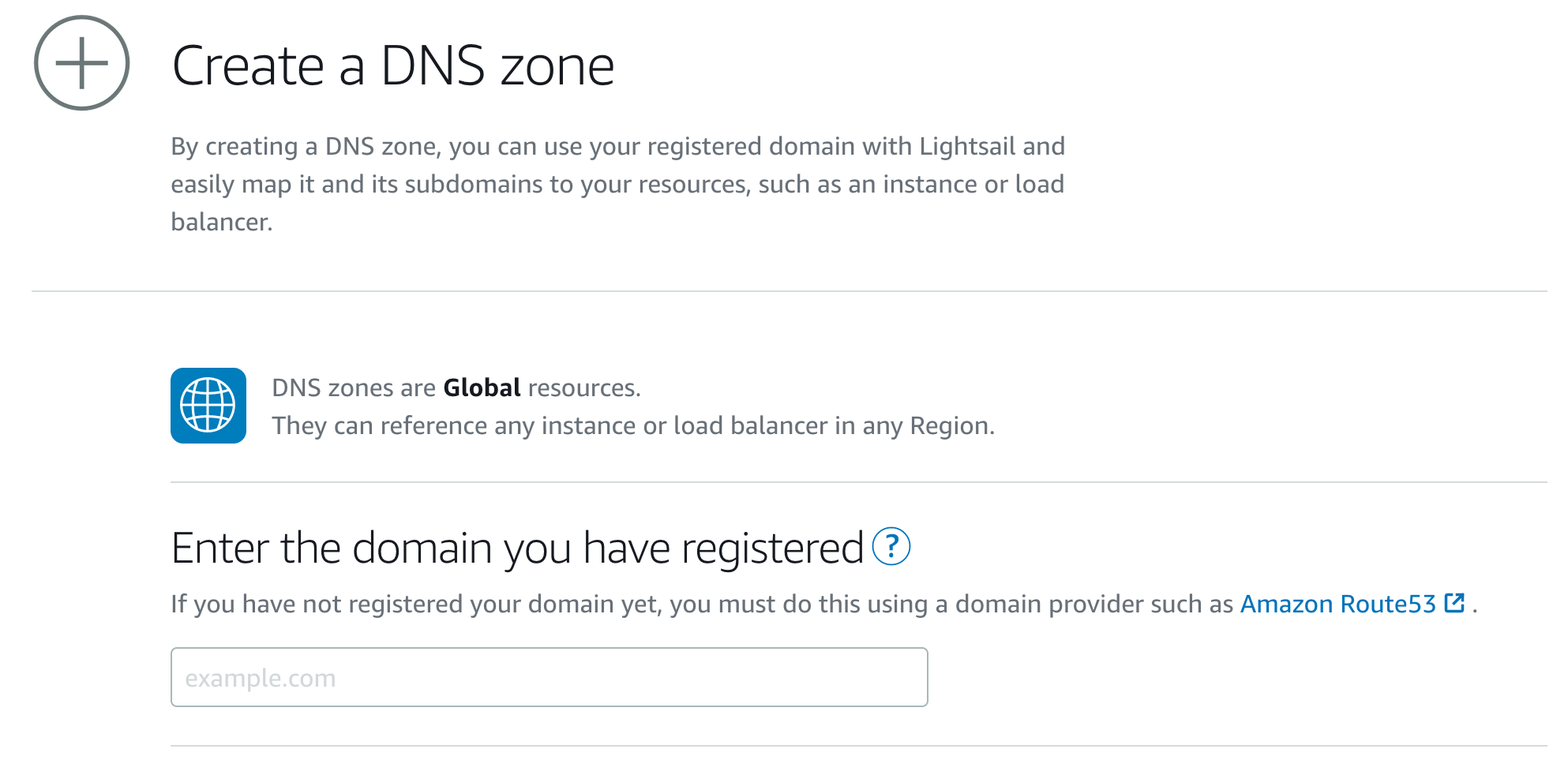
Lightsail: Pros & Cons
Like with any cloud service, Lightsail has its pros and cons. Some of the more obvious ones are:
Pros
- Clear & transparent pricing: Pricing is clear and you have a good idea of what your monthly expenses would be.
- Ease of use: Lightsail’s UI is straightforward and easy to use especially when compared to the AWS console.
- Low maintenance: Most of the lightsail services (DNS, Loadbalancers, Database) are managed and thus the operational burden of running your application in Lightsail is pretty low.
Cons
- Lightsail is missing some advanced features such as:
- Security groups: there is no support for security groups to control inbound and outbound traffic. You need to use firewalls to achieve the same.
- If the rest of your infrastructure is on Terraform, it might be hard to fully provision all Lightsail services using Terraform since some of the services aren’t yet supported.
- Currently, it is not possible to upgrade your Lightsail database to RDS.
Lightsail Alternative: Lightsail vs DigitalOcean
DigitalOcean is LightSail’s main competitor. The target audience for both of these services are developers who want to be able to spin up their web services easily. We will try to compare these two offerings to get a better idea of how these services stack up against each other.
They’ve taken the relatively complex process of deploying servers to the cloud and simplified the entire process. Their UI is beautifully designed and cloud servers can be deployed within minutes. Pricing has always been transparent and you know what you’ll be paying each month upfront.
Features
Lightsail and DigitalOcean are pretty comparable when it comes to the features they both offer. They both provide an easy-to-use interface for setting up as well as APIs for any programmatic setup. When it comes to choosing a server, they both provide a lot of choices. One can go with a The table below compares the two across various dimensions:
| Feature | Lightsail | DigitalOcean |
|---|---|---|
| VPS Flexibility | ✓ | ✓ |
| Managed Database | ✓ | ✓ |
| Loadbalancer | ✓ | ✓ |
| DNS | ✓ | ✓ |
| Block Storage | ✓ | ✓ |
| Application Images | ✓ | ✓ |
| Custom Images | ✗ | ✓ |
Pricing
Similar to the features, pricing between the two is also pretty similar.
| CPU | RAM | HDD | Transfer | Lightsail | DigitalOcean |
|---|---|---|---|---|---|
| 1 Core | 1 GB | 40 GB | 2 TB | $5/mo | $5/mo |
| 1 Core | 2 GB | 60 GB | 3 TB | $10/mo | $10/mo |
| 2 Core | 4 GB | 80 GB | 4 TB | $20/mo | $20/mo |
| 2 Core | 8 GB | 160 GB | 5 TB | $40/mo | $40/mo |
| 4 Core | 16 GB | 320 GB | 6 TB | $80/mo | $80/mo |
Performance
The blog post does a comprehensive performance comparion between various VPS providers. Lightsail and DigitalOcean performed comparably in these tests.
When to use Lightsail
When it comes to choosing between Lightsail and DigitalOcean, there are a few factors to consider:
- If you are already using AWS, it makes sense to use Lightsail.
- If you are planning to use other AWS services or you might upgrade from Lightsail to EC2, it makes sense to use LightSail.
- If you haven’t used either of these services before, you are probably better off starting with DigitalOcean. DigitalOcean is simple and straightforward to use and this is their main business.
Final thoughts
Lightsail is a service targeted towards developers who probably haven’t used AWS before or want a service that is easy to use with minimal maintenance overhead.
There are a lot of good reasons to use Lightsail:
- No need for prior AWS knowledge
- Get a complete web service up & running in less than an hour
- Clear & transparent pricing